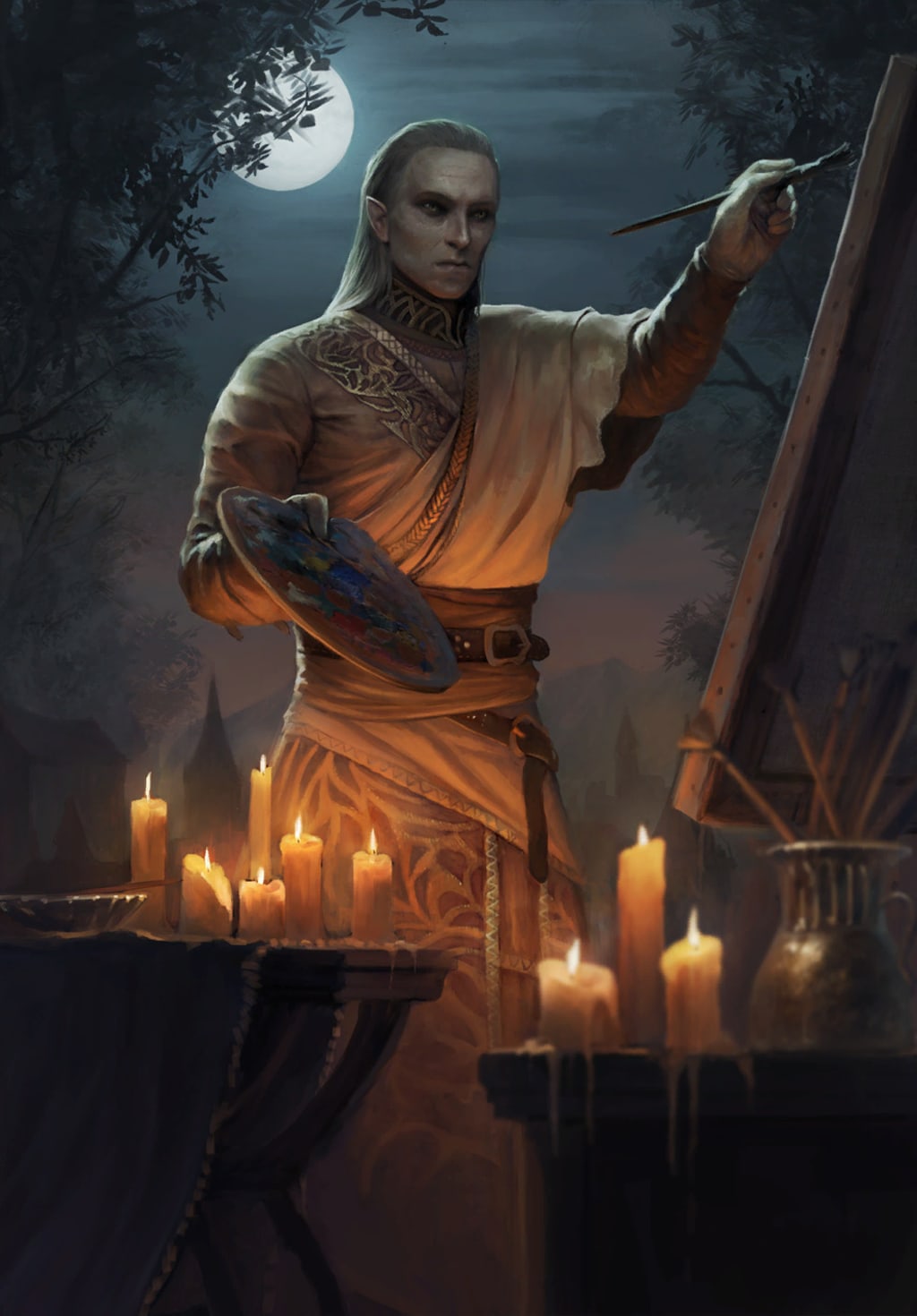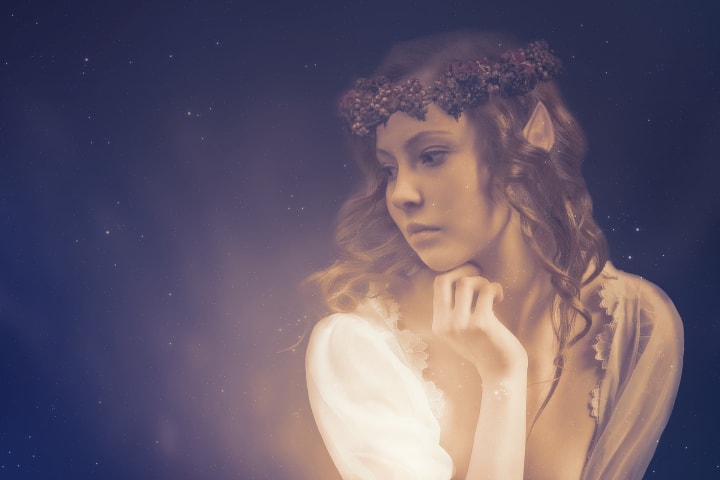5 Tips For Playing Better Half-Elves and Half-Orcs
A Pathfinder RPG Guide

Elves and orcs are two of the classic species you'll find in most high fantasy RPGs... they're also the two who are most commonly capable of having children with other species. When these bloodlines mix, the results can be rather unique, leading to generations of characters with the potential to become so-called half-elves or half-orcs.
While each of these options has their own merits, often we get so caught up in the broad strokes of their backgrounds that we can lose sight of the little things that can make them fun and unique as characters. Which is why if you feel like you're having trouble stepping outside the box with your current PC, I'd recommend checking out the following tips.
Additionally, if you like this particular article, make sure you check out the 5 Tips Master List over on my gaming blog Improved Initiative! And for more general geekery, take a look at my full Vocal archive as well!
Tip #1: Who (Or What) Are Your Parents?

A lot of the time there is an assumption with half-elves and half-orcs that one of their parents was human, and the other was an elf or an orc respectively. And while some games spell this out specifically, others give players far more options in terms of how the character's mixed heritage came to be.
For example, those who have read the Blooded splat book for my Sundara: Dawn of a New Age setting (available for both Pathfinder and for Dungeons and Dragons 5th Edition) have the caveat that elves can have children with any sentient species. Orcs aren't quite so flexible with the nature of their partners, but they can conceive children with most of the other base player species in the setting. So you might have a character with elven and orc heritage combined, you might half someone whose mother was a dwarf and whose father was an elf, or you could end up with the more traditional human/orc or human/elf combinations.
Stepping outside the usual setup can spark a lot of unusual character ideas, so check to be sure what the options are in your particular game.
Tip #2: Did It Skip A Generation (Or More)?

When we think about these characters we often get hung up on the "half" part of the name. So much so that we just naturally assume our character is a first-generation cross over between two species... but what if that isn't the case?
I talked about this in a previous entry in this series,5 Tips For Playing Better Tieflings and Aasimar. In short, consider the possibility that your character's elven or orcish heritage was a latent trait that doesn't always manifest in every member of the family... or even in every generation. Perhaps it was even buried deeply enough that it required two parents of unique histories to bring it to the forefront, and even then it wasn't always the case.
This can lead to several interesting scenarios. For example, does your character have siblings that don't share this particular heritage? Were your parents shocked, with no idea of how you came out the way you did, thus requiring them to dig into their family history? Could this have led to you being given up for adoption due to misunderstandings, or being raised by distant family members who had similar circumstances in how they were born? There's nothing saying you must step out of the traditional setup, but it's worth considering if you want to.
Tip #3: How Does Your Heritage Manifest?

Mechanically if you're playing a half-elf or a half-orc then you receive all of the powers and abilities on your sheet. But it's worth taking a moment and asking what the specific expression of your heritage looks like, and what might throw people off if they don't know what to look for.
As an example, heterochromia (when you have two different colored eyes) is a common trait among creatures of mixed heritages in our world... so a half-orc or a half-elf might bear this as a telltale sign of their history. In some places it might even be considered a sign of orc or elf heritage, even if the individual has the condition for completely separate reasons. Alternatively, you may run hotter than other creatures, be physically larger or more developed, have sharper senses, or bear an unusual coloring in your skin. These unique aspects can be as blatant or as subtle as you wish, but it's worth looking at your specific heritage, and asking what hallmarks it's left in your bloodline.
Those looking for specific inspiration might find Orcs of Sundara (available for Pathfinder and DND 5E) as well as Elves of Sundara (also available for Pathfinder and DND 5E) to be useful in this regard.
Tip #4: Who Raised You?

Every adventurer had to have someone around to help them reach adulthood, and if you're a half-elf or a half-orc this can be particularly important for you to consider. Were you primarily raised within a community of elves or orcs? Were you raised in neither, brought up among others with similar heritage? Alternatively, were you the sole person in your family or village with such a unique ancestry, marking you out?
While this question is primarily about your parental figures (be they your actual parents, an aunt and uncle, the warrior lodge you were surrendered to as a baby, etc.), it's also about the culture you were surrounded by. Did those with your unique heritage fulfill a particular niche? Were you discriminated against because of your ancestry? Alternatively, were you given unique opportunities because of your bloodline?
Questions like this establish what "normal" was like where you grew up. Which you can then use to ask how the rest of the setting is strange, unique, or different to the experiences you'd had previously.
Tip #5: What Habits Do You Have?

Half-elves and half-orcs have unique physiology that might lead them to develop all sorts of strange or unusual habits. For example, does your half-elf keep their hood up because it dampens loud sounds and helps shade their eyes from bright light? Given their enhanced senses, this "mysterious" look might actually be a way for them to avoid getting overstimulated. A half-orc might need to file their teeth, not to look intimidating or to be more vicious in battle, but because it's either that or eat rough foods that upset their stomach to grind their constantly-growing fangs down.
There are all sorts of behaviors that might seem strange or unusual from an outsider's perspective, but make total sense for a half-elf or half-orc. Whether it's eating things that might be considered disgusting (or outright poisonous) to others, a need for physical activity, or even a constant need to eat due to a higher-than-average metabolism, consider the everyday habits you might develop when you have such a unique heritage to balance.
Like, Follow, and Stay in Touch!
That's all for this week's Fluff post!
For more of my work, check out my Vocal archive, and stop by the YouTube channel Dungeon Keeper Radio. Or if you'd prefer to read some of my books, like my alley cat thriller Marked Territory, its sequel Painted Cats, my sword and sorcery novel Crier's Knife or my recent short story collection The Rejects, then head over to My Amazon Author Page!
To stay on top of all my latest releases, follow me on Facebook, Tumblr, Twitter, and now Pinterest as well! To support my work, consider Buying Me a Ko-Fi, or heading over to The Literary Mercenary's Patreon page to become a regular, monthly patron. That one helps ensure you get more content, and it means you'll get my regular, monthly giveaways as a bonus!
About the Creator
Neal Litherland
Neal Litherland is an author, freelance blogger, and RPG designer. A regular on the Chicago convention circuit, he works in a variety of genres.
Blog: Improved Initiative and The Literary Mercenary
Reader insights
Outstanding
Excellent work. Looking forward to reading more!
Top insights
Compelling and original writing
Creative use of language & vocab
Easy to read and follow
Well-structured & engaging content
Expert insights and opinions
Arguments were carefully researched and presented
Eye opening
Niche topic & fresh perspectives
Masterful proofreading
Zero grammar & spelling mistakes
On-point and relevant
Writing reflected the title & theme






Comments
There are no comments for this story
Be the first to respond and start the conversation.